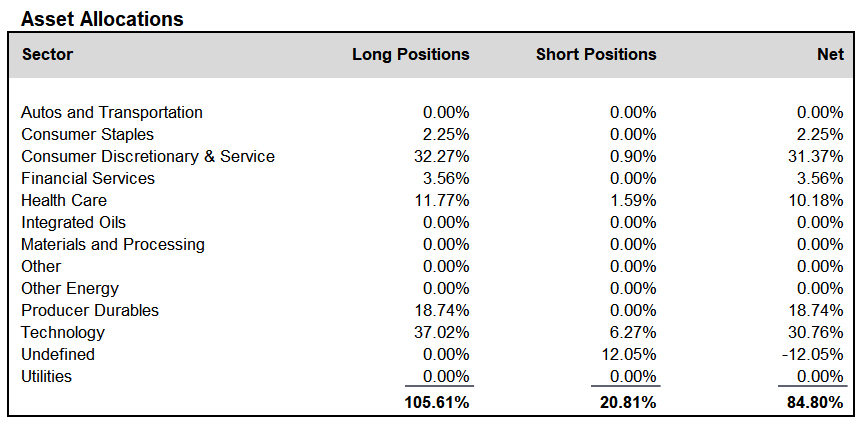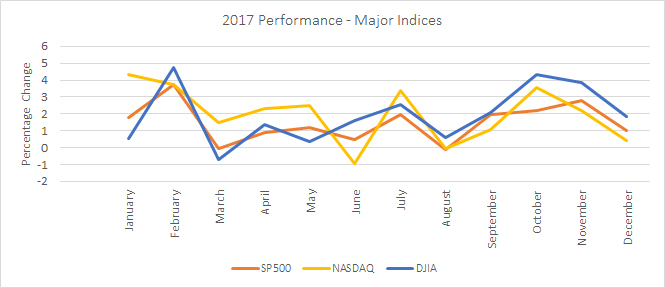
Ocean Park Capital Management
2503 Main Street
Santa Monica, CA 90405
Main: 310.392.7300
Daily Performance Line: 310.281.8577
Stock Indices:
| Dow Jones | 42,270 |
| S&P 500 | 5,911 |
| Nasdaq | 19,113 |
Bond Sector Yields:
| 2 Yr Treasury | 3.89% |
| 10 Yr Treasury | 4.41% |
| 10 Yr Municipal | 3.31% |
| High Yield | 7.26% |
YTD Market Returns:
| Dow Jones | -0.64% |
| S&P 500 | 0.51% |
| Nasdaq | -1.02% |
| MSCI-EAFE | 17.30% |
| MSCI-Europe | 21.20% |
| MSCI-Pacific | 10.50% |
| MSCI-Emg Mkt | 8.90% |
| US Agg Bond | 2.45% |
| US Corp Bond | 2.26% |
| US Gov’t Bond | 2.44% |
Commodity Prices:
| Gold | 3,313 |
| Silver | 33.07 |
| Oil (WTI) | 60.79 |
Currencies:
| Dollar / Euro | 1.13 |
| Dollar / Pound | 1.34 |
| Yen / Dollar | 144.85 |
| Canadian /Dollar | 0.72 |
Fund Overview
Equities rose to record levels in 2017, as did the Ocean Park funds. Technology stocks and consumer discretionary and service stocks were particularly strong. Within those sectors, semiconductor companies and semiconductor equipment companies, as well as the FAANG companies (Facebook, Apple, Amazon, Netflix, and Google) generated outsized gains. Although those groups retreated modestly in December, we nonetheless outperformed the S&P 500 for the year. We also outperformed the HFRI Equity Hedge Total Index, which was up 13.46% for the year.
During December, we added to positions in the consumer discretionary and service, consumer staples, and producer durables sectors, and reduced positions in the technology sector. We also maintained our hedge in the technology sector through our position in SOXS, which is an ETF with a leveraged short exposure to the PHLX semiconductor sector index. We finished the month at about 85% net long, down from about 90% at the end of November.
We once again thank you for your investment in the Fund, as we strive to build upon our long-term performance and earn your continued confidence.
A schedule showing the performance of the Investors Fund is included below, along with our Asset Allocation Chart. Daily updates on our activity are available on our Results Line, at
310-281-8577, and current information is also maintained on our website at www.oceanparkcapital.com. To gain access to the site enter password opcap.
*These results are pro forma. Actual results for most investors will vary. See additional disclosures on page 4.
Past performance does not guarantee future results.




